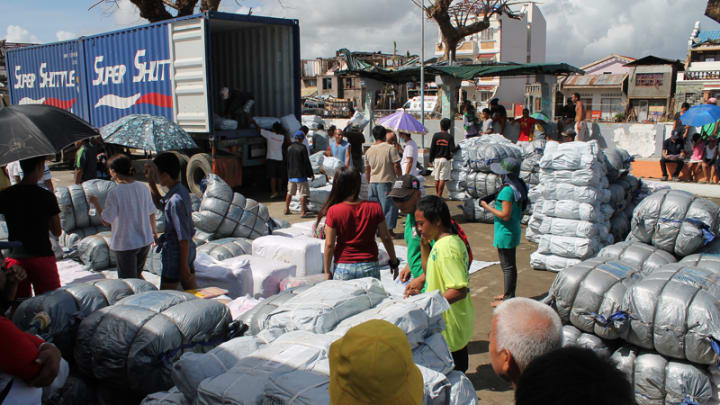
BANGKOK — Despite evidence that points to economic and social benefits of disaster preparedness, it can still be a hard sell for governments or corporations focused on short-term wins, according to Hans Guttman, executive director of the Asian Disaster Preparedness Center.
Asia and the Pacific comprises the most disaster-prone area in the world, and the vast variety of disasters still complicates preparedness and response in a region where risk is now outpacing resilience, according to the United Nations Economic and Social Commission for Asia and the Pacific’s 2017 disaster report.
Intensive disasters such as earthquakes and cyclones most often make headlines. But it is “extensive” disasters including persistent flooding, coastal erosion, and small or medium storms, that can cause more cumulative damage, especially for the poor.
Statistics sometimes serves to shroud the full economic and social effects of these types of disasters in developing nations, and Guttman warns of placing too much emphasis on such figures: “The headline grabbing ones are the ones that show up in the statistics, which we then use in portraying the costs of disaster,” he said.
Laos, for example, is not statistically considered prone to large disasters, but suffers annual small weather-related events and impacts that claim lives and exacerbate existing issues, he said. Drought, too, poses complications in many developing nations when few people die and disaster isn’t declared, yet thousands are plunged back into poverty.
Development agencies and large corporations, as well as better regional cooperation can play an even bigger role in mainstreaming preparedness to mitigate some of this, he said.
As an example of what he’d like to see more of, Guttman pointed to the formation in 2016 of “One ASEAN, One Response,” a declaration signed to strengthen cooperation and coordination mechanisms in responding to disasters to achieve faster response, mobilize greater resources, and establish stronger coordination. There is now an ASEAN store in Thailand and another in Malaysia that house supplies for disasters that ASEAN members can draw from, Guttman said.
The ADPC is more involved than ever in Regional Consultative Committee on Disaster Management, he added, which provides an informal mechanism for development of action strategies for disaster reduction in the region and promotion of cooperative programs on a regional and subregional basis.
“There’s still a lot of gains to be made there … there’s never enough development assistance, but we can leverage competencies from countries within Asia. The Philippines are good at looking at these risks, China has a huge cadre of people experienced with floods, Russia has experts in dealing with forest fires. Instead of always bringing in people from the outside, let’s foster countries here to share and train each other.”
Guttman is optimistic that greater private sector engagement will also serve to strengthen preparedness in coming years.
“Our experience in engagement with the private sector has been very positive,” he said. “In the past, ourselves and many actors in the area of preparedness and disaster management have failed a little bit in providing clarity on where the opportunities lie and advising how they can be involved.”
See more related topics:
► NGOs in Asia-Pacific pivot toward disaster resilience
► Clinton Foundation aims to lead Caribbean disaster recovery with new action network
► Opinion: Ending poverty means investing in social, economic, and environmental resilience
During Thailand’s devastating 2011 floods, for example, one of the biggest problems wasn't for large companies themselves, which had continuation plans and were up and running in a matter of weeks. Instead it was their suppliers that had been wiped out. In response, they extended their business continuation planning for their suppliers and their supply lines, Guttman said, a practice that has since been taken up throughout the private sector.
He’d also like to see government agencies try to raise the awareness among small and medium enterprise with no disaster preparedness plans: “Business continuation, and in some cases the entry into it, is a little bit too high for many of them, but there are possibilities of course of governments coming in to subsidize part of it because it's in their interest also that these companies recover.”
Guttman sees the development sector’s role as communicator and convener of many of these ideas, including advising that disaster preparedness should be part of investment decisions when it comes to infrastructure in earthquake-, flood- or landslide-prone areas.
“The development sector needs to assist in making sure that that is understood by the people who make these decisions,” he said. “Over the years, a lot of [development professionals] have been better, including myself, in fitting in environmental aspects, like social and environmental impact assessments. In a similar way, there has to be considerations of where can you fit in and where is it appropriate to deal with disaster preparedness.”




